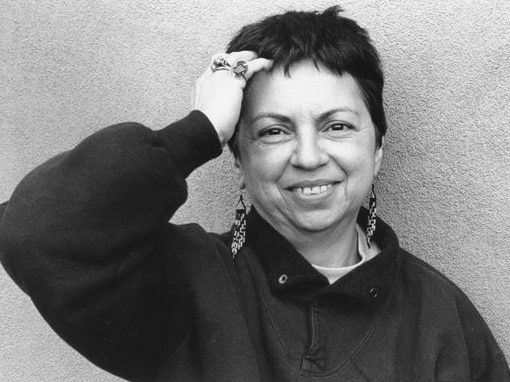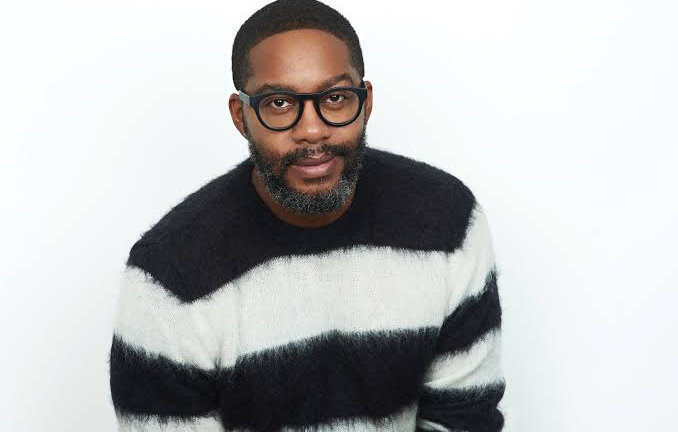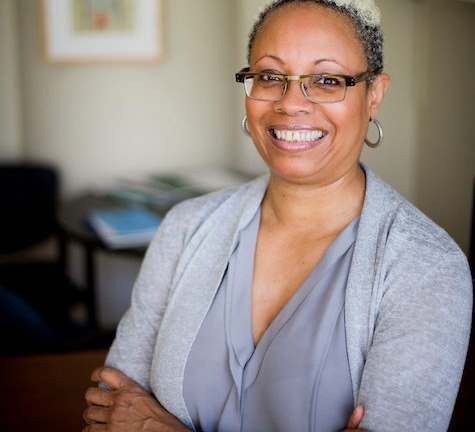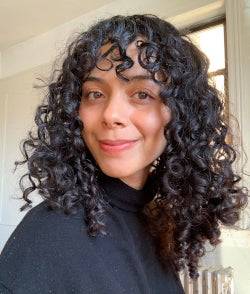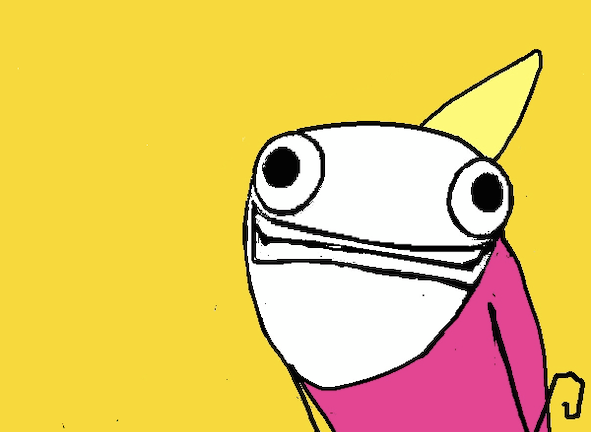Click the title of any essay to access
“La Conciencia de la Mestiza/Towards a New Consciousness,” by Gloria Anzaldúa
“La Conciencia de la Mestiza” is the powerful conclusion to Gloria Anzaldúa’s book Borderlands / La Frontera. In this groundbreaking work, she analyzes her experience of occupying borderlands as someone who is tricultural: fluent in Mexican, Indigenous, and Anglo cultures. As she explores how this complex social location shapes la conciencia de la mestiza, she is acutely aware of the marginalization and possibility contained in this identity: “La mestiza has gone from being the sacrificial goat to becoming the officiating priestess at the crossroads. As a mestiza I have no country, my homeland cast me out; yet all countries are mine because I am every woman’s sister or potential lover” (p.102). Her liminal position comes at acute costs, as she receives opposing messages from multiple cultures simultaneously, which creates within her “a struggle of borders, an inner war” (p. 100). But, ultimately, her message aims to empower those who have mestiza consciousness. The mestiza, she argues, has a plural personality that is acclimated to living with ambiguities and contradictions. A great deal is visible from this vantage point. Anzaldúa’s hybrid identity is richer, more mutable, and more malleable precisely because it is inclusive. She conveys mestiza consciousness through her use of code meshing as well as her effortless blending of poetry, philosophical argument, and call to action. Anzaldúa’s work — prescient in both substance and style — is every bit as relevant today as it was when it was originally published.
“Twelve Minutes and a Life,” by Mitchell S. Jackson
This essay, winner of the 2021 Pulitzer Prize and National Magazine Award for Feature Writing, provides a strong instance of code-meshing — and in addition to fusing two dialects, it fuses multiple genres. Part epitaph, part memoir, and part cultural history of running, this piece places the murder of Ahmaud Arbery in numerous contexts. More importantly, this essay celebrates Arbery’s life, insisting that readers view him as “more than a symbol, more than a movement, more than a cause.” We hope you will regard this piece as an invitation to combine dialects and genres in your own writing. We further hope that, as you read, you’ll slow down and appreciate the work Jackson is doing on the sentence level. In particular, his use of intensification (repeating the same phrase to create suspense and emotional power) is stunning.
“The New World: Envisioning Life After Climate Change,” written by David Wallace-Wells and illustrated by Anuj Shrestha
This visual essay about the future of our warming planet is memorable and engaging. The short blocks of text, the bold illustrations, and the interactivity of the article invite readers to sit with a problem that is often hard to wrap our minds around. In addition to demonstrating how powerfully texts and images can interact in an essay, this piece shows how helpful details can be to illuminate a sprawling and complex issue. For instance, Wallace-Wells points out that, in the future, palm trees could thrive in unexpected places like London. Ultimately, the essay argues that while climate change will undoubtedly cause enormous destruction and upheaval, it is also something that we can navigate and mitigate, if we act wisely. The essay concludes on this powerful note: “We have lost our chance to forestall disaster, and there are reasons to fear the world to come. But it remains our to make.”
Please note: Because this article is interactive, it needs to be experienced on the website for the New York Times. The Times offers readers several free articles a month. Additionally, USC offers all students a free year-long subscription. Learn more here.
“The Whiteness of Wealth,” by Dorothy A. Brown
In The Whiteness of Wealth, Dorothy A. Brown’s tax policy research assumes the form of urgent, compelling antiracist activism. She originally became a tax attorney to join a field where “the only color that mattered was green” (p.5), but her disillusionment grew quickly, and she began assembling research to demonstrate how tax law — far from being color-blind — actively and systematically contributes to the growing wealth gap between Black Americans and their white peers. Even though the IRS does not publish their statistics by race, Brown shows how, “Taxpayers bring their racial identities to their tax returns. As in so many parts of American life, being Black is more likely to hurt and being white is more likely to help” (p.11). Her introduction blends personal narrative (the origin story of her research, her drive to do this difficult work in hostile spaces), historical evidence on the emergence of the modern income tax system, and hard financial data. In the same tradition as Michelle Alexander’s The New Jim Crow and Dayna Bowen Matthew’s Just Medicine, The Whiteness of Wealth calls attention to how laws and social structures in the United States are the result of conscious and unconscious racial biases that disadvantage Black people while privileging whites. An important contribution to advance a racial reckoning that is long overdue.
“Clearly Marked Ghosts,” by Francisco Cantú
In this piece, the author builds upon ideas a student introduced in an essay for Honors English. Professors do not often discuss their thoughts while grading papers, but the written conversations they have with students can be intense, informative, and — as Cantú demonstrates — generative. In addition to revealing how professors can learn from their students, this piece provides an excellent example of a “thesis-last” essay, one where the argument emerges clearly in the final paragraphs. Writers who would like to experiment with the placement of their thesis statement will find a lot to enjoy here.
“High Functioning,” by Esmé Weijun Wang
Esmé Weijun Wang’s essay “High Functioning” explores the author’s schizophrenia diagnosis and interrogates the labels attached to mental illnesses in the United States. Doctors view Wang as a “high functioning” schizophrenic because she attended Yale and is a successful, published writer. However, Wang suggests that this label might be inaccurate. Anxious to retain freedoms and to protect herself in medicalized spaces, Wang admits she draws on her background as a fashion journalist to appear chic and convince doctors that she’s put together and “sane.” As her essay progresses, Wang questions if anyone can ever truly assess another person’s level of functioning. Does she, as a Chinese American, work to seem “high functioning” because of intersecting pressures related to “model minority” myth? Is she attempting to convince herself she’s “normal” because she internalized social stigmas against mental illness and disability? Can Wang ever know her own level of functioning if she continually postures and performs sanity for others? The essay insists that these difficult questions have real stakes, because in the U.S. we accord rights, privileges, and protections to mentally ill people based on how sane they appear.
“Monstrous Motherhood,” by Kelsey E. Henry
Kelsey Henry’s essay on a niche horror subgenre, “mommy horror,” is a great example of cultural criticism. She takes two examples of this subgenre, Goodnight Mommy and Rosemary’s Baby, to think through the idea of motherhood, a concept loaded with social meaning and expectations. Henry’s essay demonstrates how cultural criticism, particularly film criticism, can rely on much more than an analysis of plot or characters (and what they represent), although these elements are, of course, important as well. She reaches deep into her criticism toolkit to look at things like mood, setting, and genre by paying close and slow attention to all of the cinematographic choices made in a film. Horror films are especially good at showing how external environments can reflect interior psyches. By paying attention to these dimensions, we get great lines like: “In contrast, Goodnight Mommy’s Mother is vacuous. The feelings she carries are too light, not heavy or strong enough for the serious business of motherhood. She is an imposter, a changeling.” The horror genre is a great case study for building criticism beyond character/plot, since the characters and plots are usually relatively (or deceptively) simple. Through various techniques, films can unsettle the conventions and ideas most familiar to us in the world, and Henry’s careful eye is a great example of this.
“Hungry Human Bodies,” by Ruby S. Tandoh
Most people know Ruby Tandoh from her memorable stint on The Great British Bake-Off, where she won acclaim for her delicious breads and cakes. But it’s Tandoh’s skills as a writer and a cultural critic that are the real showstopper here. In “Hungry Human Bodies,” she argues for the importance of taking pleasure in our food. It’s a powerful argument, but what is most impressive about Tandoh is how skillfully she writes in praise of something. Many writers know how to gain momentum on the page by criticizing something, deconstructing it or revealing its problematic messages. It is far harder to generate complex, multifaceted arguments in celebration of something, presenting it not just as satisfying but delicious. Tandoh does just that, while supplying us with a few easy recipes to try at home. “Have a little fun with your mealtimes,” she argues — while expertly showing us how (p. 35).
“Athleisure, Barre, and Kale: The Tyranny of the Ideal Woman,” by Jia Tolentino
This ambitious essay takes on some big concepts, including, but not limited to, capitalism, feminism, and technological transformation. It’s nuanced and insightful but also accessible to a general audience. Reading it helped me better understand various trends in fashion, fitness, and food that I had not thought enough about. Tolentino draws on a range of support to advance her claims: economic data, history, scholarly writing, online writing, observation, and lived experience. The first person is not out of place in this essay; in fact, it makes the argument more persuasive! But so does the discussion of Donna Haraway’s seminal “Cyborg Manifesto.” The concluding paragraph is especially striking, where Tolentino eloquently urges readers to reimagine the status quo.
“Depression, Part Two,” by Allie Brosh
This piece showcases the possibilities of a graphic essay, one where words and images work together to make the argument. Often, Brosh’s drawings serve as evidence: they illustrate and further deepen the points she is making. More fundamentally, her drawings add emotional texture, literally illustrating the fact that depression transcends the language we have to describe it. Along the way, Brosh (who always represents herself as a tubular white creature with a yellow, cone-shaped ponytail on her head) makes an important, two-pronged argument. On the one hand, her essay argues that mental illness does not always make sense, even to those experiencing it. On the other, her piece humorously and gently outlines how to help a loved one with depression — or, perhaps, how not to help. This piece can be absorbed in mere minutes, but don’t let Brosh’s simple color palette or loose drawing style fool you: this essay is a complex, subtle, and virtuosic piece of work. [Content warning: This piece includes discussion of mental illness and describes Brosh’s suicidal thoughts; it may be disturbing for some readers.]
“Poverty, by America,” by Matthew Desmond
Matthew Desmond won the Pulitzer prize for his 2016 book, Evicted: Poverty and Profit in the American City. Now, in his latest book, Desmond widens his lens, asking why a nation as wealthy as America allows 37.9 million people to live in poverty. The book asserts that poverty persists in America because the rest of us — to varying degrees, and whether we realize it or not — benefit from it. In the excerpt shared here, you can hear a portion of the audiobook, as read by Dion Graham. As you listen, we hope you’ll take a moment to appreciate Desmond’s skillful use – and Graham’s skillful rendering – of repetition. Multiple sentences begin with the phrase “poverty is,” stacking vivid images to illustrate the urgency of the issue.
THH 216
213-740-3691
writing@usc.edu
January 16 – April 26
M – Th, 9am – 9pm (PST)
F, 9am – 4pm (PST)
